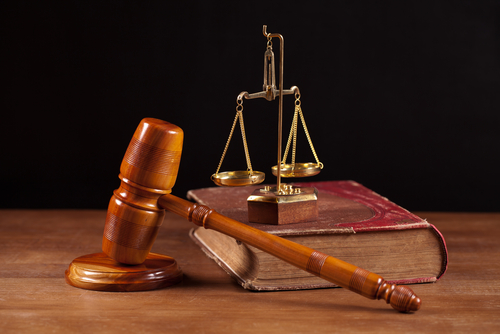
Turning Compliance and Legal Messaging into Media Stories
Legal and compliance updates shape business operations, but communicating these changes effectively requires more than just relaying information. Communications professionals face the challenge of transforming complex regulatory updates into compelling narratives that resonate with stakeholders while maintaining accuracy and compliance. Media stories about legal and policy changes need to balance technical precision with accessibility, ensuring the message reaches its intended audience without losing essential details. This balance becomes even more critical as organizations navigate regulatory shifts and need to maintain transparency with their stakeholders.
Understanding the Foundation of Legal Storytelling
The process of converting legal and compliance information into media stories starts with understanding fundamental storytelling principles. According to research by Attorneys Media, successful legal narratives often follow the three-act structure: setting up the context, presenting the challenge or change, and showing the resolution or path forward. This framework helps audiences grasp complex legal concepts by presenting them in a familiar narrative format.
When crafting these stories, focus on real-world applications and impacts. For example, when explaining new data privacy regulations, instead of listing technical requirements, present a narrative about how these changes protect consumer information and benefit business relationships. This approach makes abstract legal concepts tangible and relevant to your audience.
Media stories about legal updates should also incorporate clear examples and case studies. These elements help readers understand practical implications while maintaining the story’s credibility. For instance, when covering changes in employment law, include specific scenarios that illustrate how the new regulations affect workplace practices.
Aligning Legal Content with Brand Voice
Creating media stories about compliance and legal updates requires maintaining consistency with your organization’s brand voice. This alignment ensures that technical information remains accessible while reflecting your company’s values and communication style.
Start by identifying your brand’s core messaging principles and apply them to legal content. If your brand emphasizes innovation, frame regulatory updates in terms of forward-thinking compliance strategies. For organizations focused on customer service, highlight how legal changes improve client experiences or protect consumer interests.
Consider your audience’s needs and knowledge level when developing these stories. Legal professionals might appreciate technical details, while general audiences need simplified explanations without legal jargon. Adapt your language and examples accordingly while maintaining accuracy.
Creating Newsworthy Angles for Legal Updates
Transform technical legal updates into newsworthy stories by identifying compelling angles that connect with broader industry trends or social issues. According to PR Week, successful legal communications often link compliance changes to current events or ongoing public discussions.
Look for elements that make your legal story relevant to current news cycles. For instance, if covering new cybersecurity regulations, connect them to recent high-profile data breaches or growing public concern about digital privacy. This approach helps editors and journalists see the news value in your story.
Focus on the human impact of legal changes. Instead of concentrating solely on technical requirements, highlight how these updates affect people, businesses, or communities. This perspective helps create emotional connections while maintaining professional credibility.
Maintaining Compliance in Media Communications
While creating engaging stories, maintaining legal accuracy and compliance remains paramount. Establish a review process that includes both legal and communications teams to ensure accuracy without sacrificing readability.
Develop a compliance checklist for media stories that includes:
- Verification of legal facts and interpretations
- Review of any client information or case studies
- Confirmation of regulatory requirements
- Assessment of potential risks or sensitivities
Document your sources and maintain records of legal reviews. This documentation helps protect your organization while demonstrating due diligence in public communications.
Monitoring and Responding to Policy Changes
Effective legal storytelling requires staying ahead of regulatory changes and industry developments. According to GovExec, successful organizations maintain systematic approaches to monitoring policy updates and preparing communication responses.
Create a monitoring system that includes:
- Regular reviews of regulatory agency updates
- Subscription to relevant legal news services
- Participation in industry associations
- Tracking of legislative developments
When significant changes occur, prepare communication strategies that address stakeholder concerns proactively. This preparation allows for timely, accurate responses when news breaks.
Measuring Communication Effectiveness
Track the impact of your legal media stories through both quantitative and qualitative metrics. According to Cision’s research, effective measurement combines multiple indicators to provide a comprehensive view of communication success.
Key metrics to monitor include:
- Media coverage extent and quality
- Stakeholder engagement levels
- Message accuracy and clarity
- Audience understanding and retention
- Impact on organizational reputation
Regular assessment helps refine your approach to legal storytelling and demonstrates the value of strategic communications to organizational leadership.
Building Long-term Communication Strategies
Develop sustainable approaches to legal communication that support ongoing media engagement. Create templates and frameworks that help streamline future updates while maintaining consistency and quality.
Invest in relationship building with key media contacts who cover legal and regulatory issues. These connections help ensure your stories receive appropriate attention and accurate coverage.
Maintain an archive of successful legal stories and case studies. This resource helps inform future communications and provides examples for training new team members.
Conclusion
Creating effective media stories from compliance and legal updates requires balancing technical accuracy with engaging narratives. Success depends on understanding your audience, maintaining brand consistency, and ensuring regulatory compliance while telling compelling stories. By following these guidelines and regularly measuring results, communications professionals can develop impactful legal narratives that inform and engage stakeholders effectively.
To implement these strategies, start by reviewing your current legal communication processes and identifying opportunities for improvement. Build relationships with legal teams and media contacts, and develop clear protocols for transforming technical updates into accessible stories. Remember that effective legal storytelling is an ongoing process that requires regular refinement based on audience feedback and measurable results.
Learn how to transform complex legal and compliance updates into engaging media stories while maintaining accuracy and connecting with stakeholders through effective storytelling